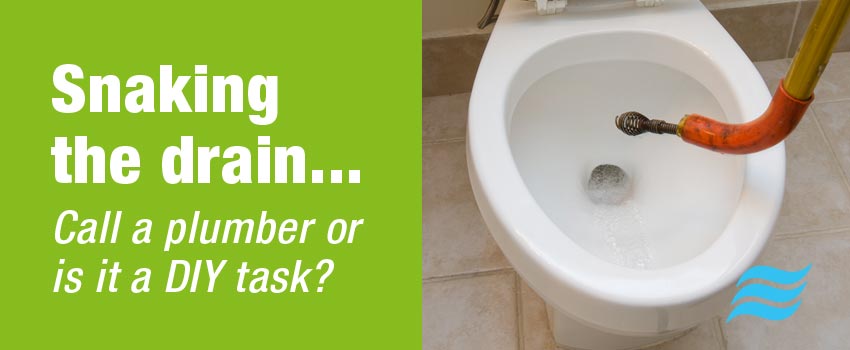
Snaking the Toilet Drain
Should I call a plumber or DIY the job?
Many plumbing tasks are DIY, some are not. While swapping out a sink faucet or unclogging a toilet might be within most homeowners’ abilities, there are many plumbing-related projects that can be costly, irresponsible, and even unsafe to do without professional intervention. Snaking the toilet drain is a plumbing task we want to explain.
Snaking the Toilet Drain Piping and Sewer Line
The verb snaking, can mean many things to different people. There is dealing with a simple clog inside a toilet trap, dealing with a clog inside a sink or shower drain, and there is snaking your drain piping and sewer lines. Many homeowners want to save their money by buying or renting a plumbing snake machine to repair issues with their drain piping and sewer line. Please read this post before spending time and money at the rental counter.
First, let's get the tool terminology straight and explore their appropriate uses.
Auger tool
- Only used on a toilet
- Cost: $35-55
- Can be used through the toilet fixture to gain access to and clear items lodged in the trap that is built into the toilet fixture.
- No need to remove the toilet from the wax ring or disconnect pipes to use an auger
- Is NOT meant to go down the drain line, as it is approximately 3ft long and not long enough to reach the drain line of the toilet
- Used for clearing items lodged into the trap, like toy cars, toilet paper wads, etc.
- Possibility of scratching porcelain inside the toilet in the process
Hand Snake
- Can be used in kitchen, shower and floor drains to dislodge debris from the traps
- For short distances and the cabling is thin, and not very strong or ridged
- Low possibility of damage to drain
- Cost: under $100
Snake Machine
- Use when you have a major blockage in your drain line or main sewage line
- Rent ~$100s or purchased $300 – thousands
- Can be dangerous – lots of moving parts
- Messy
- Can cause damage to piping
Simple clogs only involve the toilet trap which is attached to the fixture and does not require disconnection of pipes or removing the toilet from the floor. You can buy an auger tool from just about any hardware store. Snaking a toilet trap with an auger tool is doable for most homeowners. What you do need to be careful of, is not scratching the porcelain on the fixture when using this tool.
Snaking your drain lines and main sewer line is a much more complex project that could cause self-injury or damage to the pipe – a complex and expensive mistake you don’t want to make.
The process of using a snake
Use of pipe snake machine to snake the toilet drain would require removal of the toilet fixture completely to gain access to the plumbing drain below the toilet. This cannot be performed through the toilet as it will scratch the surface of the porcelain and would be very difficult to work the snake through the porcelain trap built into the toilet fixture. The use of a pipe snake machine on a smaller drain line such as a sink drain will require removal of the trap system below the sink. This allows the snake to be inserted into the piping and not down through a sink fixture that would scratch very easily and cause severe damage to the fixture. This also allows the snake to bypass the trap that would make it difficult to maneuver through.
There are several different types and sizes of pipe snaking machines available to rent or to purchase. These machines come in many different sizes and are equipped with different size motors and cables along with the many different types of cutting heads that can be attached to the end of the cable. It is very important to choose to the proper machine with the proper cable that has the correct cutting head attached to it. This will allow the cable to maneuver through the piping freely around the many bends and curves to reach and clear the blockage without getting stuck in the drain and sewer piping and inadvertently causing additional problems. The drain machines can also cause harm, damage or create a huge mess to the operator or anyone or thing in close quarters of the operating cabling if this procedure is not performed correct and safe and clean manner.
